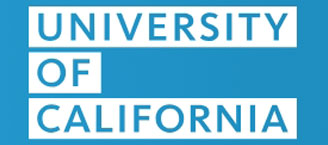In the field of dual payload ADCs, BOC Sciences, with its advanced technology platform and extensive experience, is able to provide comprehensive support to clients, ranging from antibody engineering, linker design, toxin screening, to conjugation process development. Whether it's early-stage project evaluation and solution design, or later-stage process development and quality control, BOC Sciences offers full support to help clients succeed in the antibody-drug conjugate (ADC) field.
The conjugation ratio and stability of dual payload ADCs are key issues, particularly during drug preparation, where toxins may lose their potency due to uneven or unstable conjugation. BOC Sciences ensures that both toxins are stably and uniformly conjugated to the antibody by optimizing conjugation techniques and using efficient strategies.
Selecting two toxins with complementary mechanisms of action can enhance efficacy while reducing resistance and toxic side effects. BOC Sciences has an extensive toxin library and can design the optimal toxin combination tailored to specific therapeutic targets, maximizing their cytotoxic effects and minimizing toxicity to normal tissues.
Currently, dual payload ADC conjugation methods can be divided into single-point and dual-point conjugations, both of which directly affect the design and selection of the linker. BOC Sciences has deep technical expertise in linker design, offering custom linkers with specific release characteristics (e.g., enzyme-cleavable, reducible, acid-sensitive).
The preparation of dual payload ADCs involves more complex conjugation processes, requiring not only high conjugation efficiency but also ensuring that the toxins retain their activity throughout the conjugation process. BOC Sciences continuously optimizes conjugation processes using advanced technology platforms to ensure high conjugation efficiency and product consistency.
By combining two different toxins, dual payload ADCs can enhance therapeutic effects, overcome resistance, and reduce toxicity to normal tissues, thereby improving treatment safety and efficacy. With its powerful R&D platform and technical expertise, BOC Sciences provides global customers with comprehensive custom development services from antibody screening to final product. We offer tailored dual payload ADCs and ensure precise and optimized processes at every step of design and development to guarantee high efficiency and controllability for each product.
BOC Sciences screens suitable monoclonal antibodies based on customer needs and modifies them using genetic engineering techniques to introduce specific conjugation sites, ensuring higher binding affinity and target selectivity, thus improving therapeutic effects.
We design linkers for dual payload ADCs with specific release mechanisms, using techniques such as enzyme-cleavable, reducible, and acid-sensitive methods, to ensure precise toxin release within target cells, maximizing drug efficacy while minimizing impacts on normal cells.
BOC Sciences has a variety of toxin screening libraries, allowing the selection of two complementary toxins based on therapeutic needs. These toxins are structurally optimized to improve anti-tumor efficacy and minimize toxic side effects, ensuring the safety of dual payload ADCs.
We focus on developing efficient, controllable conjugation processes, selecting appropriate conjugation methods to ensure stable and uniform attachment of two toxins to the antibody, ensuring the stability and consistency of dual payload ADC products, and meeting the demands of commercial production.
To ensure the quality of dual payload ADCs, BOC Sciences provides comprehensive analytical services, covering key quality parameters such as purity, conjugation ratio, and stability. We rigorously control the quality of each batch to ensure compliance with international standards and customer requirements.
Throughout the development process, we conduct comprehensive evaluations through cell experiments and animal models to test the in vitro activity and in vivo efficacy and safety of dual payload ADCs. This provides reliable data support for preclinical research and lays the foundation for the final application of the product.
BOC Sciences has multiple conjugation technologies, including random conjugation, site-specific conjugation, and enzyme-catalyzed conjugation, enabling the selection of the most appropriate conjugation method based on different project requirements. We ensure the conjugation efficiency and product consistency of dual payload ADCs while optimizing the toxin release mechanisms to enhance therapeutic efficacy.
BOC Sciences has a wide range of linker and toxin libraries, including various chemical structures of linkers and different types of cytotoxic agents. This allows us to design the optimal dual payload combination based on specific therapeutic targets, ensuring product efficiency and safety.
The company has a comprehensive quality management system covering every stage of product development. Through efficient quality control, we ensure that key parameters such as purity, conjugation ratio, and stability of dual payload ADCs meet international standards, ensuring successful clinical and commercial production.
Our R&D team consists of experts from various disciplines such as chemistry, biology, and pharmacology, with years of experience in antibody drug development. With deep technical expertise, we provide customized development services for different needs and address technical challenges during development to ensure efficient project advancement.
BOC Sciences offers flexible project customization services based on customer-specific needs. Whether it's early-stage antibody screening and toxin design, or later-stage conjugation processes and quality control, we provide personalized solutions to meet various R&D requirements and help clients achieve their R&D goals.
The company has established a comprehensive in vitro and in vivo evaluation system to fully assess the efficacy and safety of dual payload ADCs. We provide reliable data support through cell experiments, animal models, and other related evaluation methods, ensuring that the product has excellent therapeutic effects and safety in the preclinical stage.

Through communication with the customer, we clarify the development needs of dual-payload ADCs, analyze drug carriers, antibody selection, and loading strategies, and develop a personalized project development plan to ensure alignment of goals.
Based on customer requirements, we optimize drug carriers and loading strategies, select appropriate drugs, and conduct efficient synthesis to ensure the stability and bioavailability advantages of the dual-payload ADC.
We select suitable antibodies and perform engineering modifications, using precise conjugation technologies (such as disulfide bonds and click chemistry) to achieve dual payloads with accurate and stable drug loading.
Using techniques like HPLC and mass spectrometry, we analyze the structure, purity, and molecular weight of dual-payload ADCs, assess drug loading efficiency, stability, and release characteristics, ensuring quality.
We assess the efficacy, cytotoxicity, pharmacokinetics, and pharmacodynamics of dual-payload ADCs through cell culture and animal experiments, ensuring their effectiveness and safety in both in vitro and in vivo environments.
We optimize production processes to ensure efficient synthesis and conjugation of dual-payload ADCs while minimizing by-products. Scale-up production is carried out using cGMP-certified facilities to ensure product quality.

We complete quality control to ensure that each batch of dual-payload ADCs meets standards. Products are delivered on time, and technical support is provided to ensure smooth progression of subsequent research.
A dual-payload antibody-drug conjugate (Dual-payload ADC) is a targeted therapeutic carrier formed by combining an antibody with two drugs. The antibody portion specifically recognizes and binds to certain tumor cell surface antigens, delivering the drugs precisely to tumor cells. Compared to traditional single-drug ADCs, dual-payload ADCs carry two different therapeutic drugs (usually cytotoxic drugs) simultaneously, enhancing efficacy and overcoming tumor resistance.
A dual-payload ADC enhances efficacy by carrying two cytotoxic drugs that act on tumor cells through different mechanisms. One drug may target a specific cellular target, while the second drug complements or enhances its action, providing stronger anti-tumor effects. Additionally, dual-payload ADCs effectively overcome tumor cell resistance, increasing treatment success rates.
The advantage of dual-payload ADCs is their ability to deliver two different cytotoxic drugs simultaneously, which can enhance efficacy through complementary therapeutic mechanisms. Moreover, dual-payload ADCs minimize damage to healthy cells while maximizing treatment effects, reducing side effects. The multiple drug payloads also enable the ADCs to address tumor cell resistance.
Drug selection directly impacts the stability of dual-payload ADCs. Drugs must be stably conjugated to the antibody via an appropriate chemical linker to prevent premature release in the body. The chemical properties of the drug (such as solubility, molecular size, and lipophilicity) also affect its stability in the body. Choosing drugs with good biocompatibility and that can be effectively released in the tumor microenvironment is critical.
Dual-payload ADCs may increase toxicity risks because they carry two drugs, each of which could potentially cause side effects. However, through precise targeting design, dual-payload ADCs release the drugs within tumor cells, minimizing damage to normal cells. To reduce toxicity, the dosage, structure, and release mechanisms of the payloads need to be carefully optimized.
The key to optimizing the drug release mechanism of dual-payload ADCs lies in designing intelligent linkers that respond to tumor microenvironment characteristics (such as acidic or reductive conditions). Choosing linkers that precisely release the drug inside tumor cells or trigger drug release through tumor-specific enzymes can enhance efficacy and reduce damage to normal cells. Furthermore, the chemical stability and release rate of the drugs must be optimized to ensure the best therapeutic effect.
From cytotoxin synthesis to linker design, discover our specialized services that complement your ADC projects.
Find exactly what your project needs from our expanded range of ADCs, offering flexible options to fit your timelines and goals.
Contact our experts today for pricing and comprehensive details on our ADC offerings.










